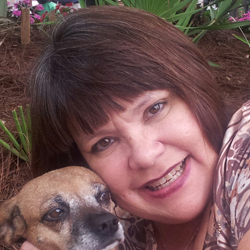 Take Care of Your Body. It’s the Only Place You Have to Live. ~ Jim Rohn
Take Care of Your Body. It’s the Only Place You Have to Live. ~ Jim Rohn
In the world of weight control, self-image has come up a lot. For many, the ONLY reason to reach their goal weight is self-image.
Not us though, right? We are on a quest for health!
::giggle::
Low self-image or self-esteem, can negatively affect almost every part of our lives, from our most precious relationships to our jobs, and ultimately, our health. But the good news is that we can raise the level of our self-image, even if we’ve had a low self-image since we were kids.
It’s as simple as creating a shift. Author Chloe Faith Wordsworth discusses thought shifts in her book Quantum Change Made Easy. Many GYTO members have benefited from thought-shifting work through Resonance Repatterning.*
Changing the way you think about yourself and your life is extremely important to boosting your self-image. Here are 5 steps to help you on that path:
Identify
Most ‘recovery’ programs start with ‘admitting you have a problem.’ This is another way of saying ‘identify.’
Identifying the issue that’s bothering you is crucial because if you can’t name it, you can’t fix it.
Be Aware
After you identify the troubling conditions or situations, it’s time to pay attention to your thoughts that are related to them. These thoughts are called self-talk. In other words, self-talk is the constant monologue in your head. Your interpretation of the thoughts may be positive, negative, rational, irrational, facts, fiction or just neutral. Regardless, how you interpret the thoughts give them meaning.
What is amazing is that so few of us would enjoy the company of people who are persistently negative, yet many of us tolerate the critical voices that originate in our own minds. If we get used to that constant stream of self-limiting and critical chatter, we become unaware of the impact it has on our lives.
Find the Bulls Eye
Negative thoughts and beliefs about something or someone can trigger physical, emotional and behavioral responses. These can include:
Physical – muscle tension, sore back, racing heart, stomach issues, sweating or changes in sleep.
Emotional – difficulty concentrating, feeling depressed, angry, sad, nervous, guilty or worried.
Behavioral – eating when you are not hungry, procrastinating, working more than usual, spending more time alone, obsessing about a situation or blaming others for your problems.
When negative thoughts creep into your psyche, which of those responses seem to be the one(s) that you tend to fall back on?
Challenge That Thinking
You should test the accuracy of those thoughts. Are they the ONLY way to view a situation? You need to ask yourself if your view is on target with the facts and logic, or is there another explanation?
If you are unaware of your self-talk, negative thoughts can float into your consciousness, do damage and then float right back out. When this happens, you don’t challenge those thoughts properly, which means they can be completely incorrect and wrong. But this does not stop them from doing damage.
If you find it difficult to look at your own thoughts objectively, take on the perspective of your best friend. Look at a list of negative thoughts. Imagine that those thoughts were written by someone you were giving objective advice to and then think how you would challenge those thoughts.
Shift and Change
After you have identified the negative or inaccurate thinking, you can replace it with accurate thoughts and beliefs. This will enable you to find constructive ways to cope and give your self-esteem a boost.
It takes time, and effort to learn how to recognize and replace distressing thoughts with accurate ones. Thoughts occur automatically and spontaneously, and sometimes it’s hard to control them or turn them off. They can also be very powerful and usually aren’t based on logic.
When you practice the steps above, they become easier. You will be able to better recognize the thoughts and beliefs that are contributing to your low self-image.
Your self-image can change over time, so it is good to revisit the steps above often, especially when you begin to feel down. Keep a journal or a daily log of your negative thoughts and the new thoughts you create to counter them. Data is so important to pinpoint trouble spots so that you can learn and recover.
To feel happy and confident, it’s important to maintain balance, to get an accurate view of yourself, and to accept your value.
Most importantly, don’t ever discount how your positive self-image affects the people around you!
Self-Image is something I work on during your stay with me in The Bod Squad. If interested, don’t hesitate to ask me about this program by going here.
*If you are interested in finding a Resonance Repatterning practitioner who understands the nuances of the hCG Protocol, please go here and express your interest.















